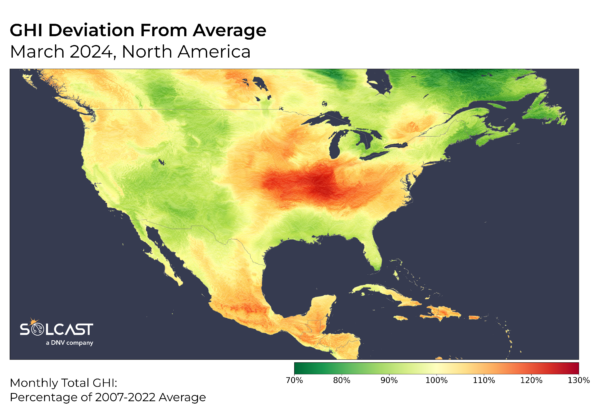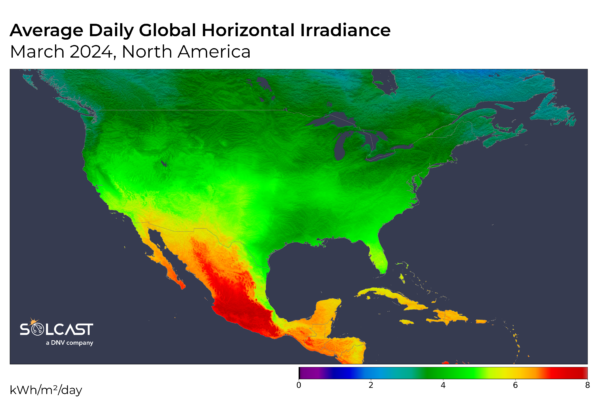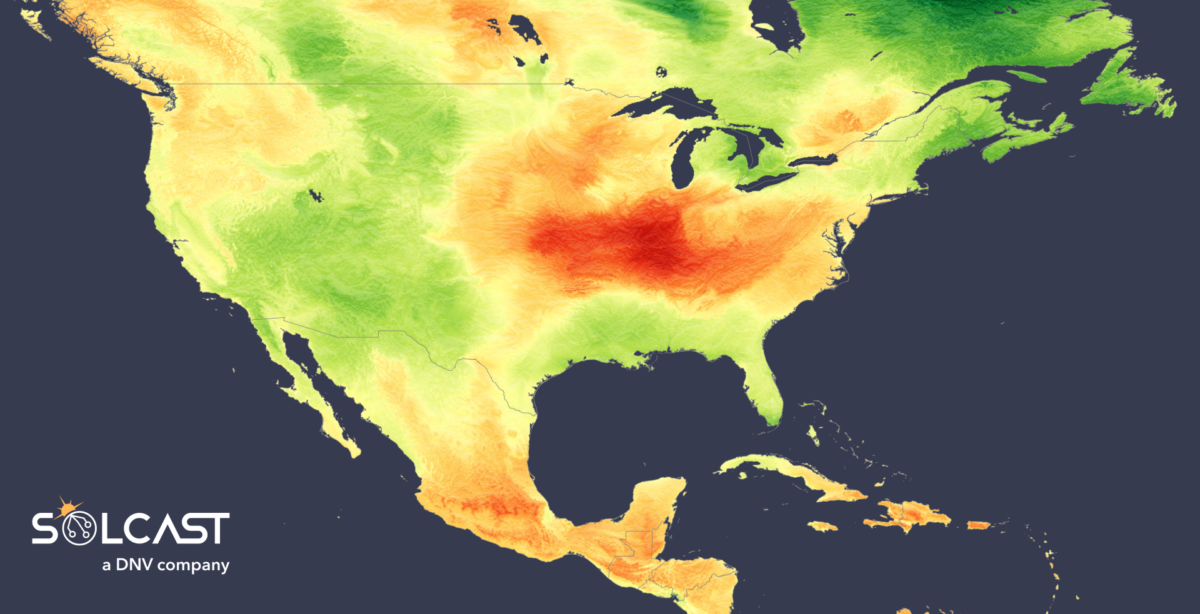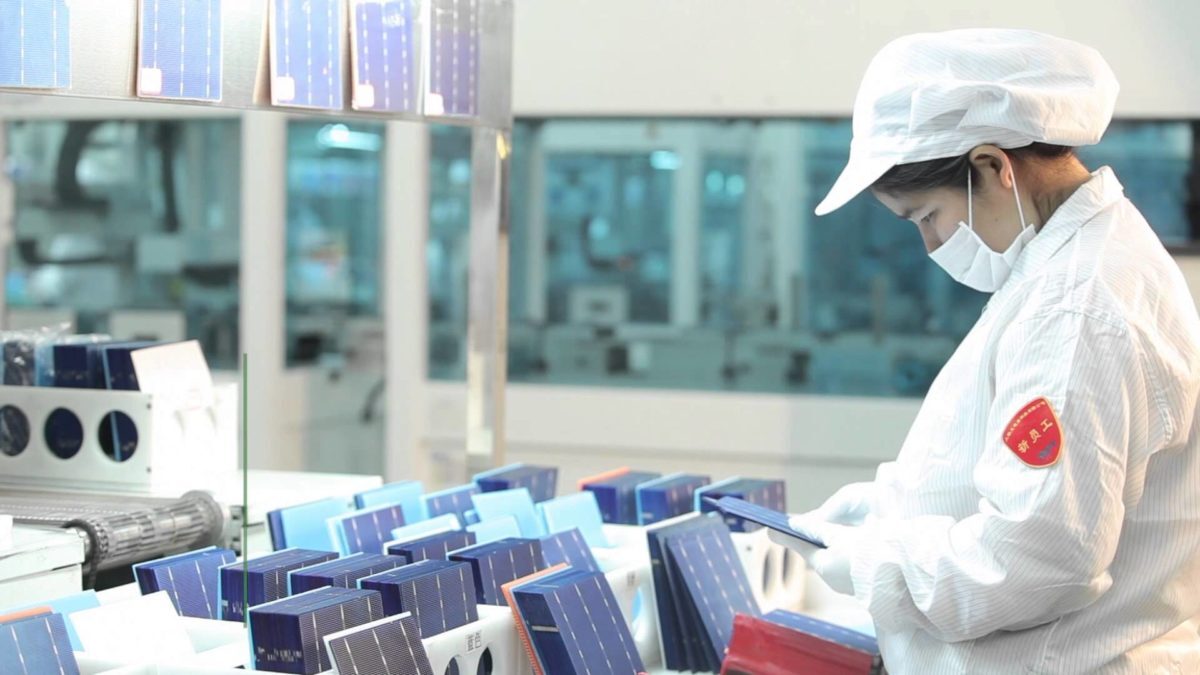March presented a mixed bag for solar energy across North America as the continent moved from a warm winter into early spring. The solar regions of California, Nevada, Arizona and western Texas saw lower than normal irradiance, but March was a clear and sunny month from the midwest to the Carolinas and across most of Mexico. Analysis conducted using the Solcast API, shows peaks of 30% more irradiance than normal in Illinois and Missouri, whilst much of the rest of the US saw average or below average irradiance.

It was a bad month for Texas solar, despite average irradiance, several of the state's large solar farms bore the brunt of severe hail storms, damaging panels. Even before the storms, much of the state has seen persistent haze from the Smokehouse Creek fire which burned for half of March, impacting clear sky irradiance and increasing PV panel soiling.
Western Canada and the US Northwest saw slightly above average irradiance thanks to a high pressure system in the middle of the month keeping things relatively dry. This did not extend far enough south to offset storms on the Pacific coast at the start and end of the month from dropping the March average to at or below average for most of the southern coast.

The midwest was sunnier than normal, as frontal systems full of Pacific moisture were somewhat blocked by the Rockies, leading to higher than normal irradiance inland. Storm systems from Canada and the Gulf delivered clouds that dropped irradiance below average for both the Northeast (-20%) and the Gulf coast (-10%).
Solcast produces these figures by tracking clouds and aerosols at 1-2km resolution globally, using satellite data and proprietary AI/ML algorithms. This data is used to drive irradiance models, enabling Solcast to calculate irradiance at high resolution, with typical bias of less than 2%, and also cloud-tracking forecasts. This data is used by more than 300 companies managing over 150GW of solar assets globally.
The views and opinions expressed in this article are the author’s own, and do not necessarily reflect those held by pv magazine.
This content is protected by copyright and may not be reused. If you want to cooperate with us and would like to reuse some of our content, please contact: editors@pv-magazine.com.



By submitting this form you agree to pv magazine using your data for the purposes of publishing your comment.
Your personal data will only be disclosed or otherwise transmitted to third parties for the purposes of spam filtering or if this is necessary for technical maintenance of the website. Any other transfer to third parties will not take place unless this is justified on the basis of applicable data protection regulations or if pv magazine is legally obliged to do so.
You may revoke this consent at any time with effect for the future, in which case your personal data will be deleted immediately. Otherwise, your data will be deleted if pv magazine has processed your request or the purpose of data storage is fulfilled.
Further information on data privacy can be found in our Data Protection Policy.